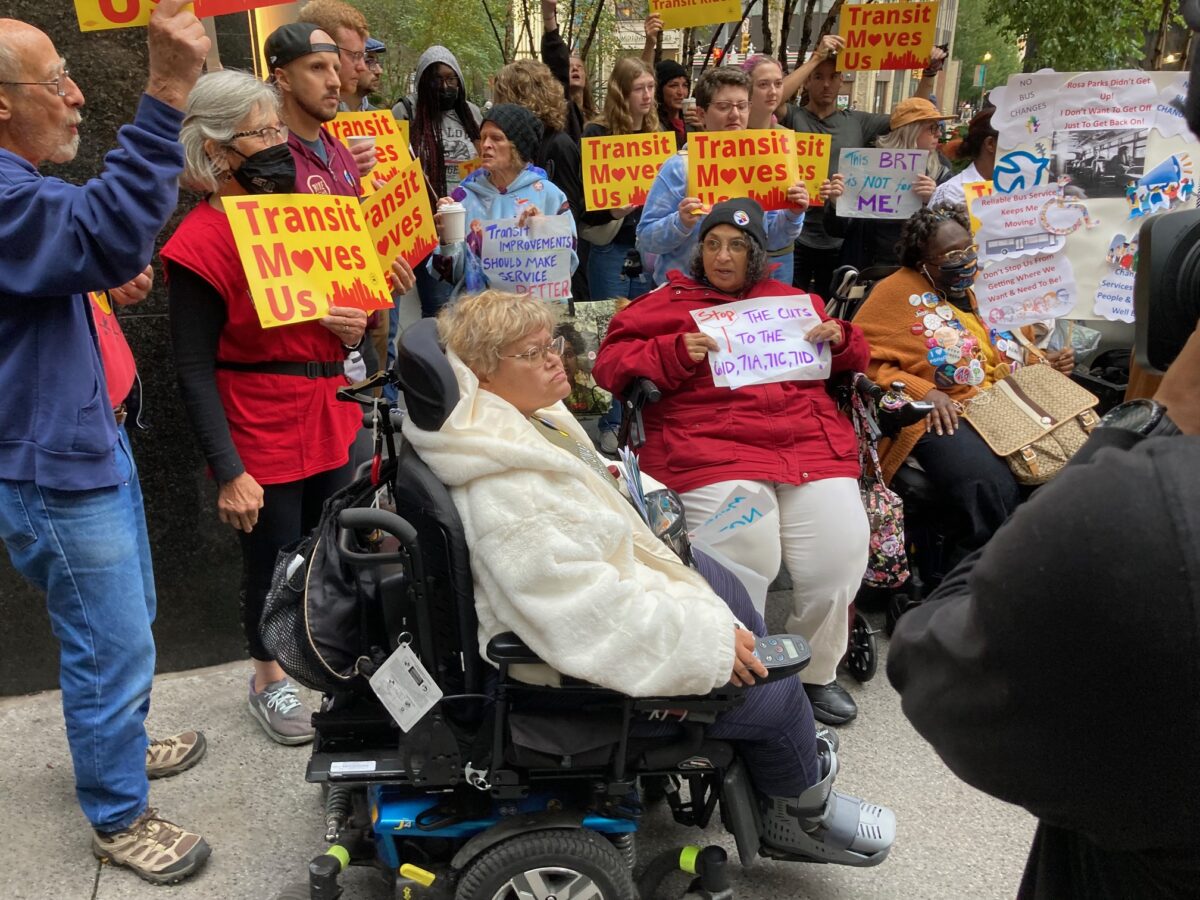Pittsburgh Regional Transit is entering a critical time that could be a tipping point for the future of transit in Allegheny County.
The latest in a series of service changes begin Sunday with four routes ending in Oakland rather than continuing to Downtown Pittsburgh to reduce what it considers to be duplication and free hours to avoid service cuts elsewhere. But the agency — like many others across the country — is having trouble hiring new workers and facing the potential for substantial retirements, which means more cuts could be on the table when the next round of service changes comes in February.
The current changes will feature 61D Murray, 71A Negley, 71C Point Breeze and 71D Hamilton having “Short” added to their names and their routes ending at Robinson Street in Oakland. For at least the first week, the agency will have employees stationed at key stops and on buses to help riders navigate the changes so they can get where they are headed.
That’s partially because dozens of passengers attended a virtual meeting last month to question the changes and tell officials the problems they would create for them. They repeated the call to stop the changes when the board of directors met on Friday, saying they don’t believe the agency paid enough attention to some 600 written concerns it received.
The agency counters that its internal review shows that 97.7% of passengers still will have a one-seat trip to Downtown Pittsburgh at their current stop and 99% will have one less than five minutes from their current stop.
The changes are part of the start of construction in Downtown Pittsburgh last month of the Bus Rapid Transit system known as the University Line. The $291 million system between Oakland and Downtown is expected to create more reliable schedules by using bus-only lanes inbound on Fifth Avenue and outbound on Forbes Avenue with priority at traffic signals to keep them moving rather than bunching up in rush-hour traffic.
But CEO Katharine Eagan Kelleman said recently the changes also were part of the agency “throwing everything at the wall and seeing what sticks” to avoid more difficult service cuts. Shortening those four routes freed about 400 operator hours that will be used to maintain service on other routes due to operator shortages.
Removing those routes from Downtown also will reduce bus congestion that has been made worse by BRT construction and threatens to throw large parts of the system on schedule.
A major part of the problem is that the agency doesn’t have enough operators and is regularly running about 100 short of full staff. That means those who are working often are stretched thin by overtime.
In addition to offering incentives for new operators and streamlining the hiring process, Kelleman said the agency is trying to “get creative” by reviewing where operators take their breaks and whether it can shorten the time buses are out of service going to or from maintenance garages in East Liberty, Ross, West Mifflin and Collier. Anything to free up a couple of minutes here and there to either provide more service time or extra down time to keep operators from leaving is under consideration.
Although the agency’s wages and benefits are among the highest in the country, Kelleman said operating transit vehicles and dealing with the public is a difficult job. In a generally tight job market, potential workers often have alternatives to jobs that can require working holidays and split shifts.
“We’re looking at what we can do to make things better for your family life,” she said.
Ross Nicotero, president and business agent for Local 85 of the Amalgamated Transit Union, acknowledged the agency has problems keeping operators. Staffing problems could grow in the next few years as dozens of operators hired from 1990 to 1992 reach retirement age and leave the agency.
“They don’t see the value of [an operator’s career] down the road,” he said Friday. “They’re here one of two years and then leave because they are burned out.”
Additionally, Kelleman said the agency is finding that post-pandemic candidates come to the agency with more health concerns than in the past. For example, instead of 3% to 8% of applicants failing sleep apnea tests, that rate now is 20% to 30%.
The hiring crisis also comes at a time when the agency wants to push forward with expansion under its NEXTransit plan adopted two years ago. That $3 billion plan calls for expanding the light rail system to North Hills, extending the Martin Luther King Jr. East Busway to Monroeville, and creating a new corridor linking the Strip District, Oakland, Hazelwood and Overbrook, among other projects.
Those plans would require additional operators as well as a new maintenance garage to handle additional vehicles. Right now, the agency has neither available.
Kelleman conceded she doesn’t know what effect the operator shortage could have on those future plans.
“We’ll have to see,” she said.
Ed covers transportation at the Pittsburgh Post-Gazette, but he's currently on strike. Email him at eblazina@unionprogress.com.



